Employee Training Agreement Samples
-

Employee Training Cost Reimbursement Agreement
download now -
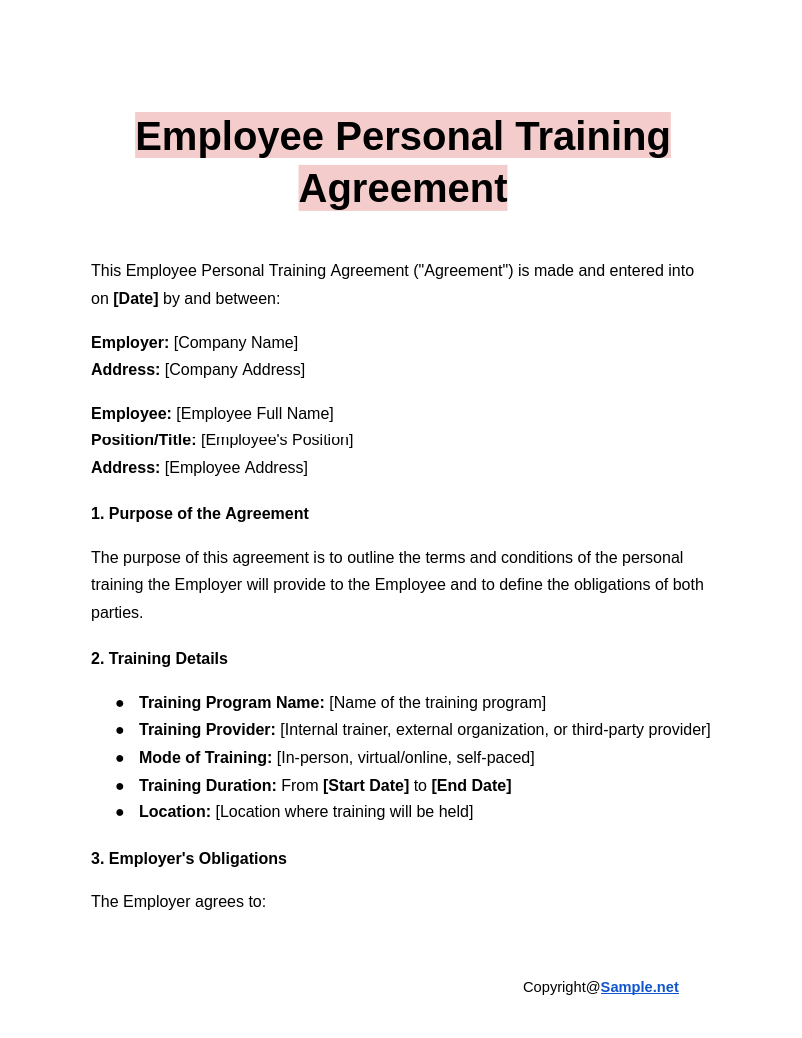
Employee Personal Training Agreement
download now -

Employee Training Agreement Template
download now -
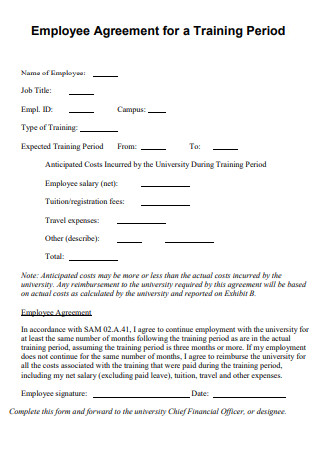
Employee Training Contract Agreement
download now -
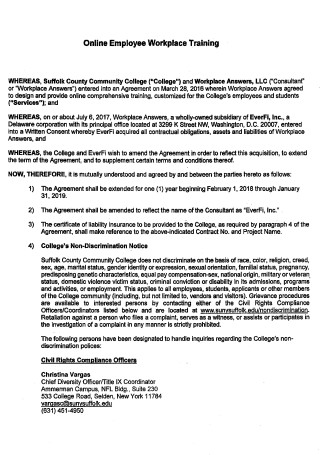
Employee Workplace Staff Training Agreement
download now -
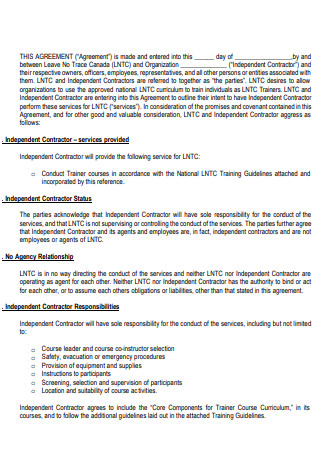
Employee Training Bond Agreement
download now -

Simple Employee Course Training Agreement
download now -
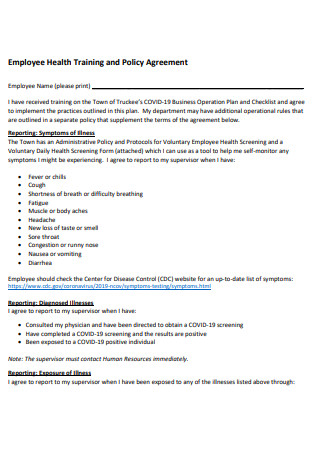
Employee Trainer Health Training and Policy Agreement
download now -
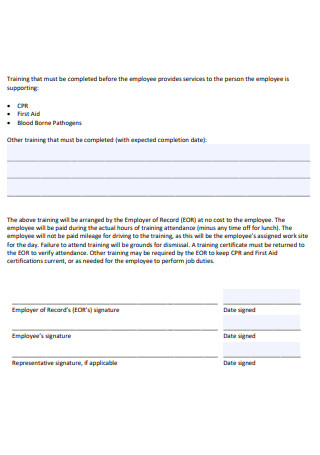
Sample Employee Responsibility Training Agreement
download now -
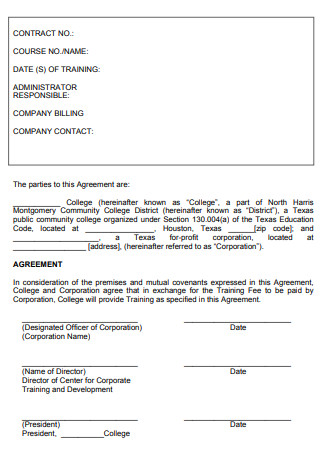
Formal Employee Training Development Agreement
download now -

Employee Training Repayment Agreement
download now -
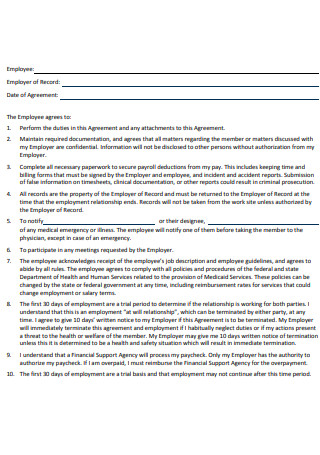
Employee Training Support Agreement
download now -
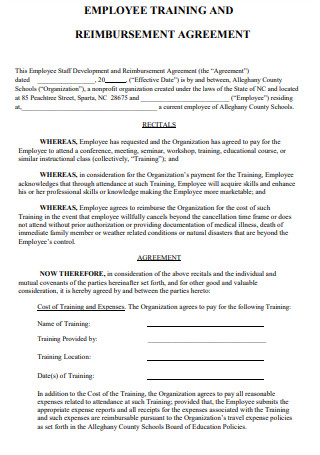
Employee Training And Reimbursement Agreement
download now -
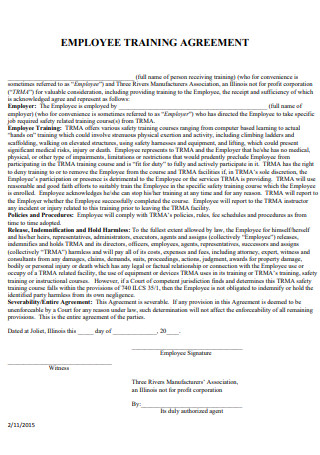
Employee Training Agreement Template
download now -
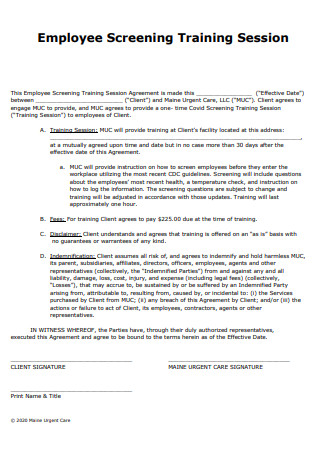
Employee Screening Training Session Agreement
download now -
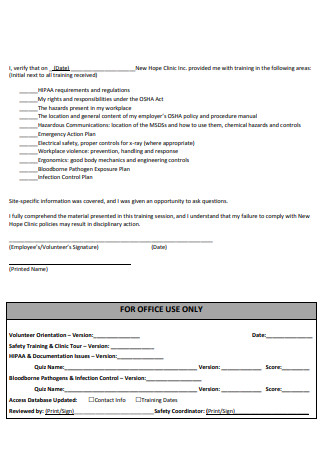
Employee Human Resource Training Agreement
download now -
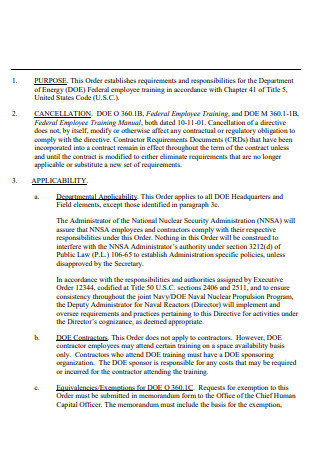
Federal Employee Training Agreement
download now
FREE Employee Training Agreement s to Download
Employee Training Agreement Format
Employee Training Agreement Samples
a
Purposes of an Employee Training Agreement
How to Create an Employee Training Agreement
FAQs
Is it possible for my employer to charge me for compulsory training?
Is training considered work?
What is the definition of a management trainee position?
What are common mistakes to avoid when drafting a training agreement?
How long should an Employee Training Agreement last?
Are there any legal restrictions on training agreements?
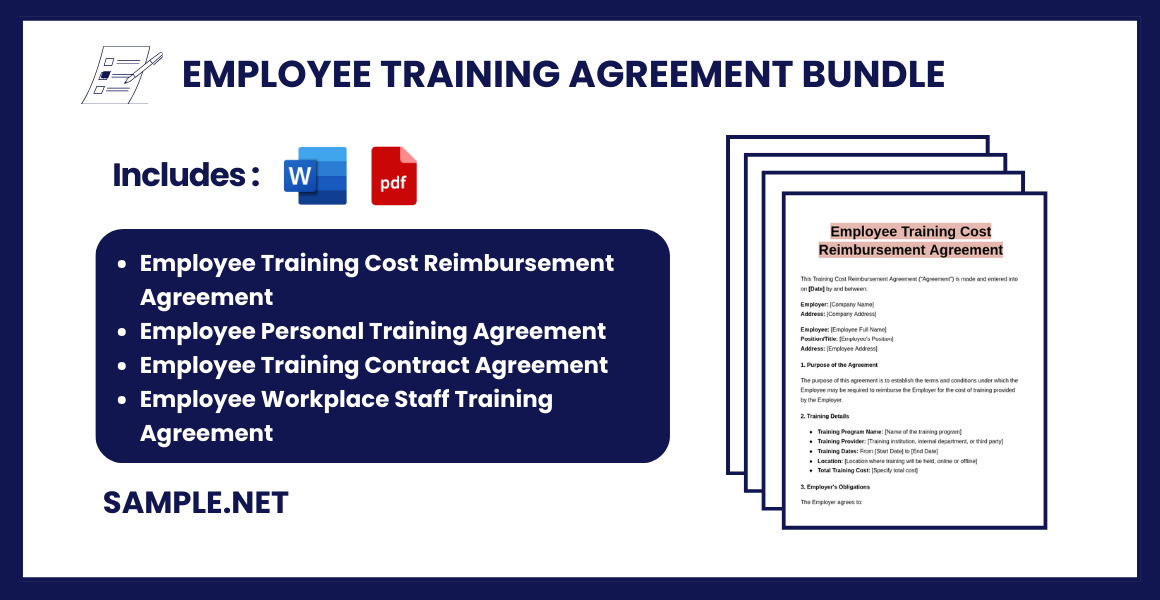
Download Employee Training Agreement Bundle
Employee Training Agreement Format
This Employee Training Agreement (“Agreement”) is made and entered into on [Date] by and between:
Employer: [Company Name]
Address: [Company Address]
Employee: [Employee Full Name]
Position/Title: [Employee’s Position]
Address: [Employee Address]
1. Purpose of the Agreement
The purpose of this agreement is to outline the terms and conditions under which the Employer agrees to provide training to the Employee and the Employee agrees to comply with the obligations and conditions set forth herein.
2. Training Details
- Training Title/Program: [Name of the training program]
- Training Provider: [Internal/External training provider]
- Training Duration: [Start Date] to [End Date]
- Location: [Physical or online location of the training]
- Training Cost: [Total training cost incurred by the employer]
3. Employer’s Obligations
The Employer agrees to:
- Provide the necessary training resources, materials, and support to the Employee.
- Cover the cost of the training program, which includes [list costs such as registration fees, travel expenses, accommodation, etc.].
- Ensure the training is conducted by qualified personnel or a recognized training institution.
4. Employee’s Obligations
The Employee agrees to:
- Attend and fully participate in the training program.
- Apply the skills and knowledge gained from the training to their role in the organization.
- Complete the training program successfully, including passing any necessary assessments, if applicable.
5. Repayment of Training Costs
If the Employee leaves the company voluntarily or is dismissed for cause within [X months/years] after the training program’s completion, the Employee agrees to reimburse the Employer for the training costs. The terms for repayment are as follows:
- Repayment Period: [Specify the time frame, e.g., within 12 months]
- Repayment Amount: [Specify the percentage or amount to be repaid]
- Payment Schedule: [Specify payment schedule, e.g., one-time, monthly installments, etc.]
6. Breach of Agreement
If the Employee:
- Fails to complete the training successfully, or
- Voluntarily resigns or is dismissed for cause within [X months/years] of completing the training,
then the Employee will be required to repay [amount or percentage] of the total training cost.
The Employer reserves the right to deduct any amount owed from the Employee’s final salary or other dues.
7. Confidentiality and Non-Disclosure
The Employee agrees that any proprietary knowledge, skills, or trade secrets gained during the training will remain confidential and will not be disclosed to any third party or used for personal gain.
8. Term of the Agreement
This agreement is valid from the date of execution until the Employee has met all obligations under this agreement, including repayment obligations, if applicable.
9. General Provisions
- Governing Law: This agreement shall be governed by the laws of [State/Country].
- Amendments: Any modification to this agreement must be in writing and signed by both parties.
- Entire Agreement: This document constitutes the entire agreement between the Employer and the Employee with respect to the training program.
10. Signatures
By signing this agreement, both the Employer and Employee acknowledge that they have read, understood, and agreed to the terms and conditions set forth in this document.
Employer’s Signature: ____________________________
Name: [Employer’s Name]
Title: [Employer’s Title]
Date: [Date]
Employee’s Signature: ____________________________
Name: [Employee’s Name]
Date: [Date]
What is a Employee Training Agreement?
An Employee Training Agreement is a written contract between an employer and an employee that specifies the details of training the employee will receive. It outlines the training’s scope, the financial investment made by the employer, and the employee’s obligations during and after the training. This agreement often includes a “repayment clause,” where the employee may need to reimburse training costs if they leave the organization within a set timeframe. It protects the employer’s investment and ensures accountability from the employee. You can also see more on Staff Training Agreement.
Purposes of an Employee Training Agreement
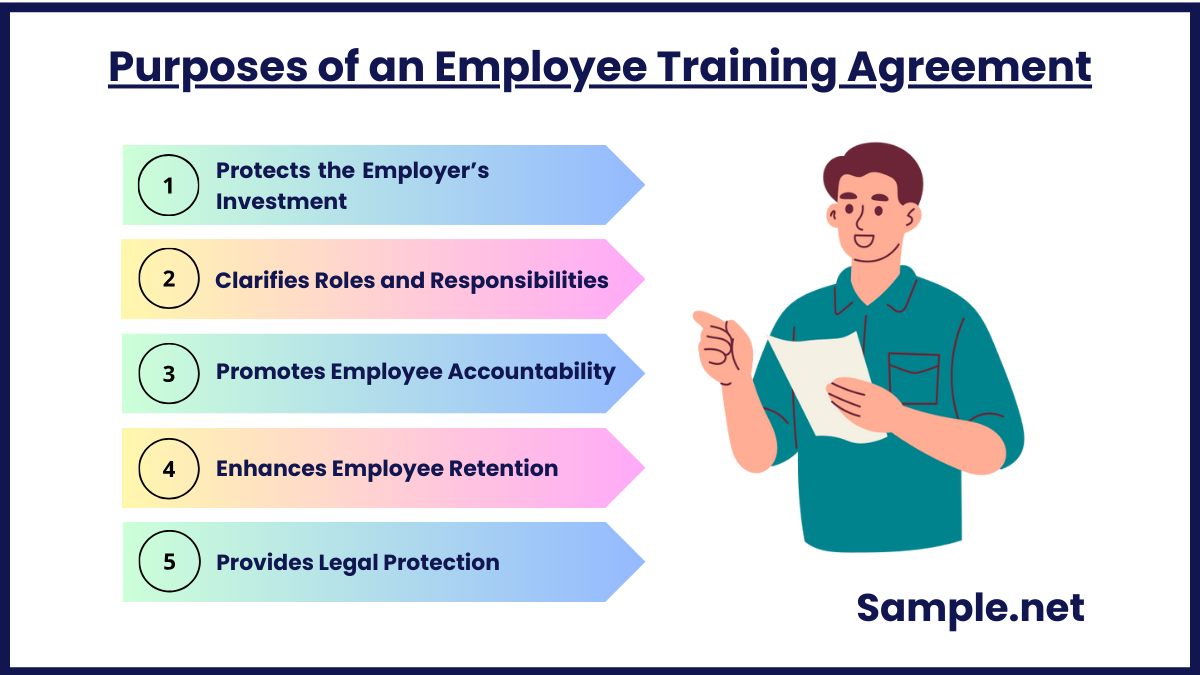
1. Protects the Employer’s Investment: Safeguards the company’s financial investment in employee training by ensuring cost recovery if the employee leaves early.
2. Clarifies Roles and Responsibilities: Clearly defines the obligations of both the employer and employee during and after training.
3. Promotes Employee Accountability: Holds employees accountable for completing the training and fulfilling post-training commitments. You can also see more on Training Services Agreement.
4. Enhances Employee Retention: Encourages employees to stay with the company for a set period after training, reducing turnover.
5. Provides Legal Protection: Acts as a legally binding document that protects the employer’s rights and prevents misunderstandings or disputes.
How to Create an Employee Training Agreement
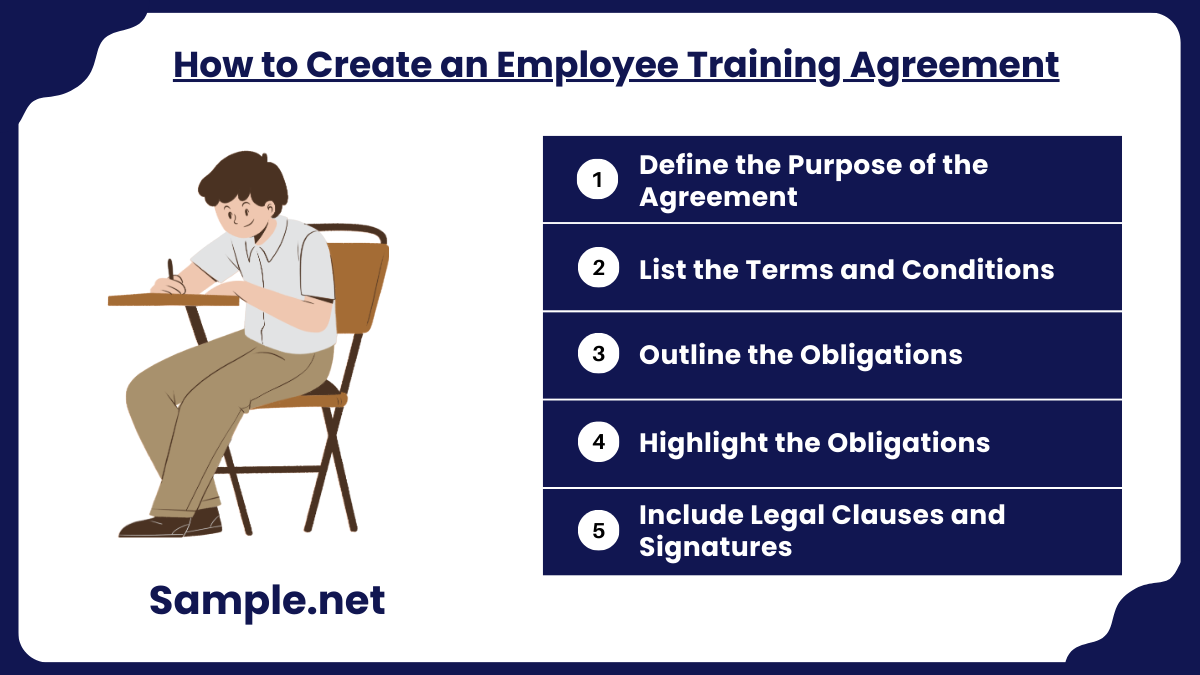
Step 1: Define the Purpose of the Agreement
Start by outlining the objective of the training agreement. State why the training is essential and how it will benefit both the employee and the employer. Identify the type of training and its relevance to the employee’s role within the company. Ensure that the purpose is clear to avoid future misunderstandings. You can also see more on Training Reimbursement Agreement.
Step 2: List the Terms and Conditions
Specify the details of the training, including the training provider, the schedule, mode of delivery (in-person, online, or hybrid), and the estimated cost. Clarify if the training is fully or partially funded by the company. Include any repayment terms if the employee resigns early.
Step 3: Outline the Employee’s Obligations
Clearly state the employee’s responsibilities during the training. This includes attending all sessions, completing assessments, and adhering to the training schedule. Indicate what the employee will owe if they leave the company before the agreed-upon timeframe.
Step 4: Highlight the Employer’s Obligations
List the employer’s commitments, such as covering the costs of training, granting time off for sessions, and offering post-training support. If any additional perks or promotions are linked to the training, mention them here. You can also see more on Safety Training Agreement.
Step 5: Include Legal Clauses and Signatures
To make the agreement legally binding, add clauses covering disputes, breach of agreement, and governing laws. Ensure that both the employer and employee sign and date the document. Store a copy in the employee’s personnel file for future reference.
An Employee Training Agreement promotes clear communication, accountability, and commitment between employers and employees. It protects the company’s investment in training while fostering employee development. This agreement ensures transparency, reduces disputes, and motivates employees to complete the training successfully, ultimately benefiting both parties. You can also see more on Training Contract.
FAQs
Is it possible for my employer to charge me for compulsory training?
Employers might deduct money for training only if it was agreed in writing or the contract. For instance, a company may require someone to promise in writing before attending a training course that they will reimburse fees if they depart within six months.
Is training considered work?
Working hours are defined as any time the employee is available to the employer and expected to perform activities or obligations. Work-related training is included in the workweek. Generally, travel time to and from work is not included in the calculation of working hours and working agreements.
What is the definition of a management trainee position?
A management trainee works in an organization under the supervision of managers and executives. Their objective is to obtain the necessary knowledge to advance to the level of manager, frequently in specialized domains such as marketing proposals, sales reports, or business operations.
What are common mistakes to avoid when drafting a training agreement?
Common mistakes include unclear repayment terms, failing to define roles and responsibilities, omitting the training purpose, not specifying the training cost, and overlooking the legal enforceability of the repayment clause. Ensuring the language is simple, transparent, and legally compliant will help avoid disputes.
How long should an Employee Training Agreement last?
The duration depends on the nature of the training. For short-term skill-based training, the period may be six months to one year. For degree or long-term certification programs, the agreement could last for several years, especially if the training cost is high.
Are there any legal restrictions on training agreements?
Yes, training agreements must comply with local employment laws. They should not impose unfair penalties or create unreasonable conditions on employees. If a clause is deemed “unfair,” a court may nullify it. Employers should seek legal advice when drafting such agreements. You can also see more on Instructor Agreements.
